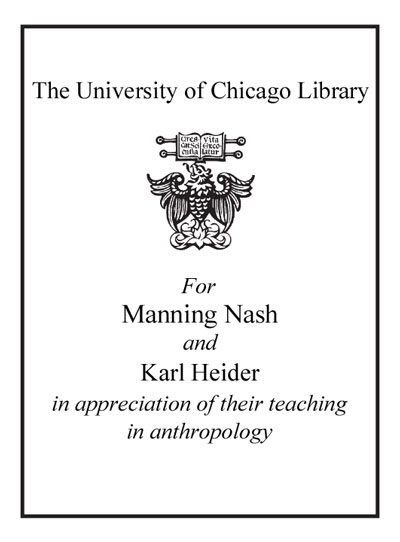Hopi runners : crossing the terrain between Indian and American /
Saved in:
| Author / Creator: | Sakiestewa Gilbert, Matthew, author. |
|---|---|
| Imprint: | Lawrence, Kansas : University Press of Kansas, [2018] |
| Description: | xvii, 276 pages : illustrations ; 24 cm. |
| Language: | English |
| Series: | CultureAmerica Culture America. |
| Subject: | |
| Format: | Print Book |
| URL for this record: | http://pi.lib.uchicago.edu/1001/cat/bib/11725975 |
MARC
| LEADER | 00000pam a2200000 i 4500 | ||
|---|---|---|---|
| 001 | 11725975 | ||
| 005 | 20181207142130.1 | ||
| 008 | 180612s2018 azua b 001 0 eng c | ||
| 003 | ICU | ||
| 010 | |a 2018027422 | ||
| 035 | |a (OCoLC)1032017767 | ||
| 040 | |a AzTeS/DLC |b eng |e rda |c DLC |d OCLCO |d OCLCF |d NMH |d NhCcYBP | ||
| 019 | |a 1031953816 |a 1032142422 | ||
| 020 | |a 9780700626984 |q hardcover |q alkaline paper | ||
| 020 | |a 0700626980 |q hardcover |q alkaline paper | ||
| 020 | |z 9780700627004 |q electronic book | ||
| 035 | |a (OCoLC)1032017767 |z (OCoLC)1031953816 |z (OCoLC)1032142422 | ||
| 042 | |a pcc | ||
| 043 | |a n-us--- | ||
| 050 | 0 | 0 | |a E99.H7 |b S264 2018 |
| 082 | 0 | 0 | |a 305.8997/458 |2 23 |
| 100 | 1 | |a Sakiestewa Gilbert, Matthew, |e author. |0 http://id.loc.gov/authorities/names/n2010011636 | |
| 245 | 1 | 0 | |a Hopi runners : |b crossing the terrain between Indian and American / |c Matthew Sakiestewa Gilbert. |
| 264 | 1 | |a Lawrence, Kansas : |b University Press of Kansas, |c [2018] | |
| 300 | |a xvii, 276 pages : |b illustrations ; |c 24 cm. | ||
| 336 | |a text |b txt |2 rdacontent |0 http://id.loc.gov/vocabulary/contentTypes/txt | ||
| 337 | |a unmediated |b n |2 rdamedia |0 http://id.loc.gov/vocabulary/mediaTypes/n | ||
| 338 | |a volume |b nc |2 rdacarrier |0 http://id.loc.gov/vocabulary/carriers/nc | ||
| 490 | 1 | |a CultureAmerica | |
| 504 | |a Includes bibliographical references and index. | ||
| 505 | 0 | |a Introduction: To the fence and back -- A world unlike their own -- Dirt trails and steel rails -- Hopi Olympian -- A tribe of racers -- Land of oranges -- Footraces across America -- Crossing the terrain -- Epilogue: Still running -- Appendix A: Louis Tewanima, Hopi (1882-1969) -- Appendix B: "Are Moqui runners world beaters?" -- Appendix C: Carlisle Town Council resolutions. | |
| 520 | |a "In 1912, Hopi runner Louis Tewanima won silver in the 10,000-meter race at the Stockholm Olympics. Tewanima ran alongside Jim Thorpe at the Carlisle Indian School before making the US Olympic team twice (he finished 9th in the marathon in 1908). His silver medal would stand as the top American achievement in the Olympic 10,000-meter race until 1964, when another Native American, Billy Mills, took gold. Tewanima eventually returned home to Arizona, where he farmed and tended sheep. Tewanima was briefly a sensation in the American press, but he was neither the first nor the last - nor even the best - Hopi distance runner. The Hopi people have a long tradition of distance running; in fact, Tewanima and another successful runner, Philip Zeyouma, were soundly defeated by two Hopi elders in a race hosted by the tribe the same year as Tewanima's Olympic victory. In Hopi Runners, Matthew Sakiestewa Gilbert uses the story of Tewanima and other Hopi runners of his era as a window into traditional Hopi culture, modernity, the boarding school experience, the rise of sports, and American nationalism. He argues that the cultural identity of Hopi runners challenged white American perceptions of modernity and placed them in a context that had national and international dimensions. This broad perspective linked Hopi runners to athletes from around the world, including runners from Japan and Ireland, and forced non-Natives to reevaluate their understandings of sports, nationhood, and the cultures of American Indian people"--Provided by publisher. | ||
| 650 | 0 | |a Hopi Indians |x Social life and customs. |0 http://id.loc.gov/authorities/subjects/sh85061939 | |
| 650 | 0 | |a Indian athletes |z United States. | |
| 650 | 0 | |a Long-distance runners |z United States. | |
| 650 | 7 | |a Hopi Indians |x Social life and customs. |2 fast |0 http://id.worldcat.org/fast/fst00960128 | |
| 650 | 7 | |a Indian athletes. |2 fast |0 http://id.worldcat.org/fast/fst00969047 | |
| 650 | 7 | |a Long-distance runners. |2 fast |0 http://id.worldcat.org/fast/fst01745203 | |
| 651 | 7 | |a United States. |2 fast |0 http://id.worldcat.org/fast/fst01204155 | |
| 830 | 0 | |a Culture America. |0 http://id.loc.gov/authorities/names/n98088766 | |
| 903 | |a HeVa | ||
| 929 | |a cat | ||
| 999 | |n 514-0 |c JRL |r 170 | ||
| 999 | f | f | |i 2aa6217a-3ff4-5e13-b826-6b63d313f971 |s 53429224-9f37-52fd-8022-8b910836e104 |
| 928 | |t Library of Congress classification |a E99.H7 S264 2018 |l JRL |c JRL-Gen |i 11170479 | ||
| 927 | |t Library of Congress classification |a E99.H7 S264 2018 |l JRL |c JRL-Gen |e NASH |b 115778685 |i 10040288 | ||

